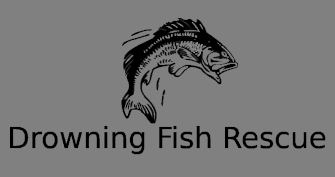Ice fishing for northern pike on rivers is an exhilarating winter pursuit that combines strategy, patience, and the right gear. Northern pike, known for their aggressive strikes and powerful fights, thrive in cold, flowing waters, making rivers prime locations for targeting them through the ice. This article explores the techniques, locations, and setups needed to successfully catch northern pike while ice fishing on rivers.
Understanding Northern Pike in Rivers
Northern pike are apex predators, often lurking in areas where they can ambush prey. In rivers, they gravitate toward slower-moving sections, such as deep pools, eddies, or areas near structure like fallen trees, weed beds, or drop-offs. During winter, pike remain active under the ice, conserving energy but striking opportunistically at baitfish. River currents influence their behavior, so understanding the flow and structure of the river is key to locating them.
Focus on areas where current slows, such as inside bends or behind islands, as these spots provide pike with ambush points. Depths of 6 to 15 feet are common for winter pike, though they may move shallower during early ice or deeper in late winter. Using a fish finder or underwater camera can help pinpoint these hotspots.
Essential Gear for Ice Fishing Pike
Ice fishing for northern pike requires specialized equipment to handle their size, strength, and toothy mouths. Below is a breakdown of the essential gear:
- Ice Auger: A 6- to 8-inch auger is ideal for drilling holes large enough to land pike, which can exceed 40 inches. Gas, propane, or electric augers are reliable for thick river ice.
- Rod and Reel: Use a medium-heavy to heavy-action ice rod, 28 to 36 inches long, paired with a sturdy spinning or baitcasting reel. Spool with 15- to 20-pound braided line and a 12- to 18-inch fluorocarbon or steel leader (20- to 30-pound test) to prevent bite-offs.
- Tip-Ups: Tip-ups are a staple for pike fishing, allowing you to cover multiple holes. Choose models with a sturdy frame and smooth spool, capable of handling large fish.
- Electronics: A flasher or fish finder helps locate pike and monitor bait activity. An underwater camera can reveal structure and fish behavior.
- Safety Gear: River ice can be unpredictable due to currents. Carry ice picks, a spud bar to test ice thickness, and a floatation suit. Always fish with a partner and check local ice reports.
Recommended Setups for Pike
Two primary setups dominate river ice fishing for northern pike: tip-ups with live or dead bait and jigging with artificial lures. Here’s how to rig each:
Tip-Up Setup with Live/Dead Bait
Tip-ups are highly effective for covering multiple areas and presenting bait naturally. Use the following rig:
- Hook: A #4 to #2/0 treble hook or quick-strike rig. Quick-strike rigs with two treble hooks increase hook-up rates and allow for easier release.
- Bait: Large shiners, suckers, or smelt (4 to 8 inches) work best. Hook live bait lightly through the back or tail to keep it lively. For dead bait, rig smelt or ciscoes to hang horizontally, adding subtle motion with current.
- Weight: Use a 1/4- to 1/2-ounce split shot or bell sinker 12 to 18 inches above the hook to keep bait near the bottom but allow some movement.
- Depth: Set bait 1 to 3 feet off the bottom, adjusting based on fish activity. In deeper pools, suspend bait mid-water column if pike are cruising.
Space tip-ups 20 to 30 feet apart, covering different depths and structures. Check local regulations for the number of lines allowed.
Jigging Setup
Jigging is ideal for active anglers who want to entice pike with aggressive presentations. Try this setup:
- Lures: Use 3- to 5-inch jigging spoons (e.g., Northland Buck-Shot Rattle Spoon) or lipless crankbaits (e.g., Rapala Rippin’ Rap) in white, chartreuse, or firetiger colors. Soft plastics like 4- to 6-inch swimbaits on 1/4- to 1/2-ounce jig heads also work.
- Technique: Drop the lure to the bottom, then lift it 12 to 24 inches with sharp twitches, letting it flutter down. Vary the cadence to trigger strikes. Adding a minnow head to the hook can enhance scent.
- Leader: A short steel or fluorocarbon leader prevents bite-offs without spooking fish.
Jig near tip-ups to attract pike to the area, then let them hit the stationary bait if they’re hesitant.
Techniques and Tips
Success on rivers requires adapting to conditions and pike behavior. Keep these tips in mind:
- Timing: Pike are most active during low-light periods—early morning, late afternoon, or cloudy days. However, they can strike any time, so stay vigilant.
- Mobility: River pike move with changing currents and baitfish. Drill multiple holes to cover a range of depths and structures, and don’t hesitate to relocate if action is slow.
- Handling Pike: Use a gaff or large landing net for big pike. Bring long-nose pliers and jaw spreaders to safely remove hooks. Practice catch-and-release for trophy fish to preserve populations.
- Regulations: Check local rules for bag limits, size restrictions, and bait restrictions. Some rivers may prohibit live bait to prevent invasive species.
Conclusion
Ice fishing for northern pike on rivers is a thrilling challenge that rewards preparation and adaptability. By targeting key locations, using the right setups, and staying safe on the ice, anglers can experience the rush of landing a toothy predator. Whether you prefer the passive strategy of tip-ups or the hands-on action of jigging, the setups outlined here will set you up for success. Bundle up, drill some holes, and get ready for an unforgettable adventure chasing northern pike through the ice.
